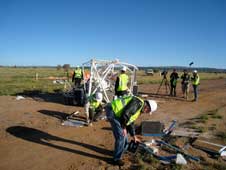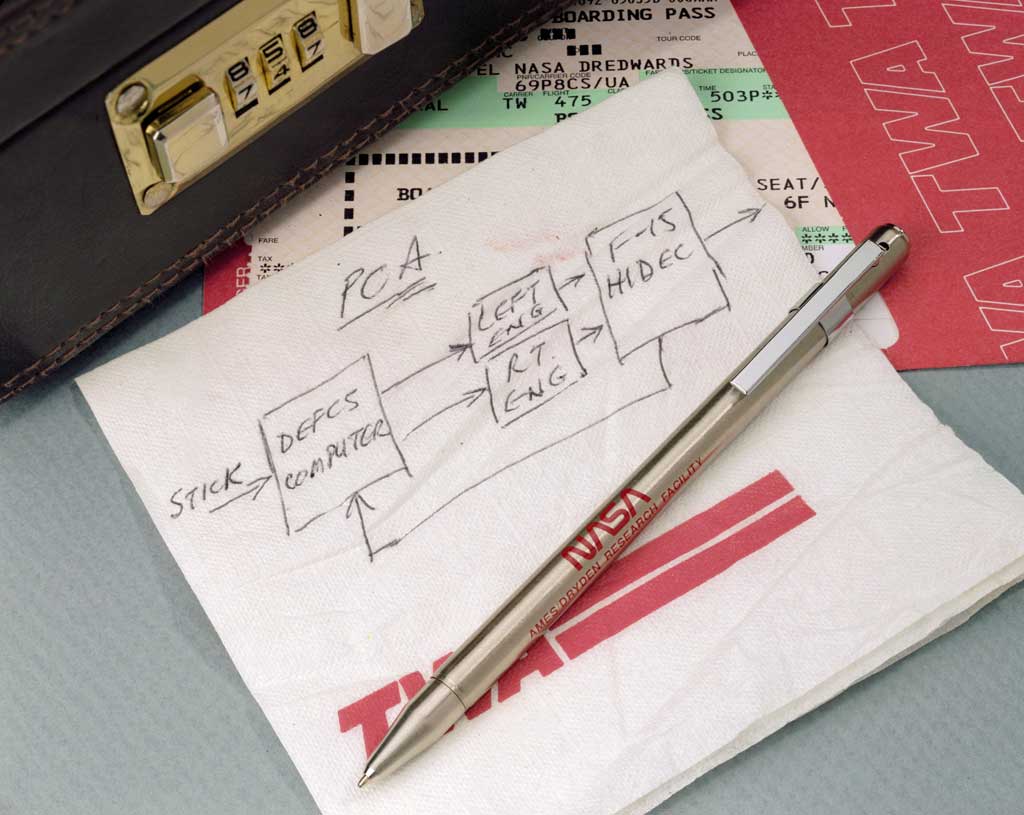November 30, 2010 Vol. 3, Issue 11
Reliance on past success was one of six root causes of a mishap during the balloon launch of the Nuclear Compton Telescope, according to a Mishap Investigation Board.

Project personnel inspect damage following a NASA scientific balloon launch mishap on April 28 at the Alice Springs Balloon Launching Center, near Alice Springs, Australia. Photo Credit: NASA
On October 2010, NASA released the Mishap Investigation Board Report for the Nuclear Compton Telescope balloon launch that took place April 29, 2010 in Alice Springs, Australia. The balloon, carrying a University of California Berkeley gamma-ray telescope designed to search for distant galaxies, inadvertently separated from the launch vehicle and dragged along the ground for approximately 150 yards before hitting the airport fence and finally a parked car. The payload narrowly missed the launch spectators.
The Mishap Investigation Board cited 25 proximate, intermediate, and root causes pertaining to insufficient risk analysis, contingency planning, personnel training, technical knowledge, government oversight, and public safety accommodations. The board attributed safety and risk complacency to a long history of high success rates and the conventional assumption that risks to the public only exist when a payload is flying over a populated area.
The investigation board also listed 44 recommendations related to better communication, more robust range and ground safety plans and procedures, and a better understanding of potentially unsafe conditions that can lead to accidents.






